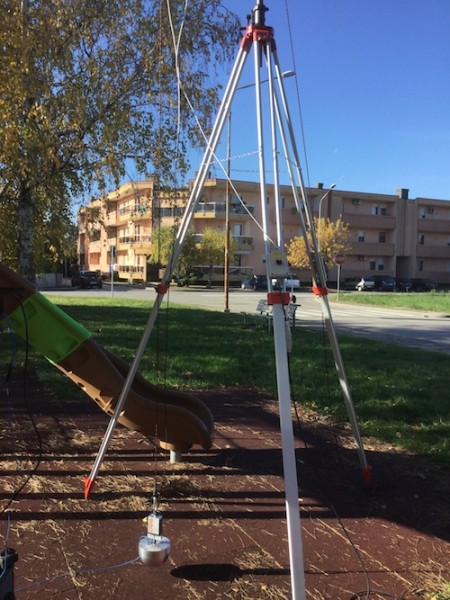
In recent years CATAS has entered into the world of the playground equipment both for evaluation of playground equipment (EN 1176 standards series) and for the assessment of impact attenuation (EN 1177). We have implemented a certification scheme for playground equipment, “CQA Playground Equipment”; at the moment two companies achieved the certification and in the last years we also have acquired the possibility to verify playground surfaces.
The reference standard is the EN 1177, in the latest version dated 2018. It is a quite complex standard that in the current revision provides two different test methods:
- Method 1: it determines the critical height of fall;
- Method 2: it verifies if, in that specific place and moment, the features of the tested surface is adequate to the play equipment upon it.
We specify that it is not a requirements standard, therefore there is not a "pass or fail" result. A simple explanation of the two test methods is presented in the following paragraphs:
Method 1. It has been applied in the majority of cases in laboratory, though there are some cases that it could be applied on site, for example when the surfaces are composed of synthetic material and natural material (sand, land with grass). Nine different impact positions with at least four drops are carried out. The test surface shall be at least 1 m2.
This test determines the maximum height in which it is possible to fall from, receiving the correct attenuation.
Method 2. This test is carried out only on site. It determines if the playground surface is suitable for the equipment from which you may fall. It is a verification that refers only to that playground in that specific moment. In fact, the recorded atmosphere conditions could modify the results. One or more drops (it depends on the dimension of the area and of the type of play equipment upon it) are needed, from the actual height of the play equipment.
The HIC value (Head Injury Criterion) and peak acceleration value (gmax) are recorded for each drop. The HIC value must be less than 1000 and the gmax value less than 200. These values are the limit to avoid serius injuries during the fall. The standard defines the HIC value as the measure of the severity of a head injury likely to arise from an impact.
CATAS has decided to accreditate both test in lab and test on site. This involves investments in particular equipment (accelerometer, head-form, recording device, thermometer for environmental temperature and humidity and for the surface temperature when on site) as well as the development of the measurement system and the carrying out of repeated checks in time, in order to assure that the quality of the data is always monitored and verified. This to guarantee to our customer a test result with the minimum error possible, calculated and expressed in uncertainly measure. Until now we have carried out a lot of tests in our lab on different playground surfaces: rubber tiles, rubber cast surfaces, surfaces composed by several layers of different materials.
We have also carried out tests on site, in playgrounds already installed within some Italian municipalities and we have not always obtained positive results.
Time, use and weathering modify the surfaces features and make them no longer suitable to attenuate the impact.
The use of this standard has increased the knowledge sectors of CATAS and it has created new skills concerning materials and methods in this sector.
For info:Arianna Visintin
+39 0432 747233
visintin@catas.com

